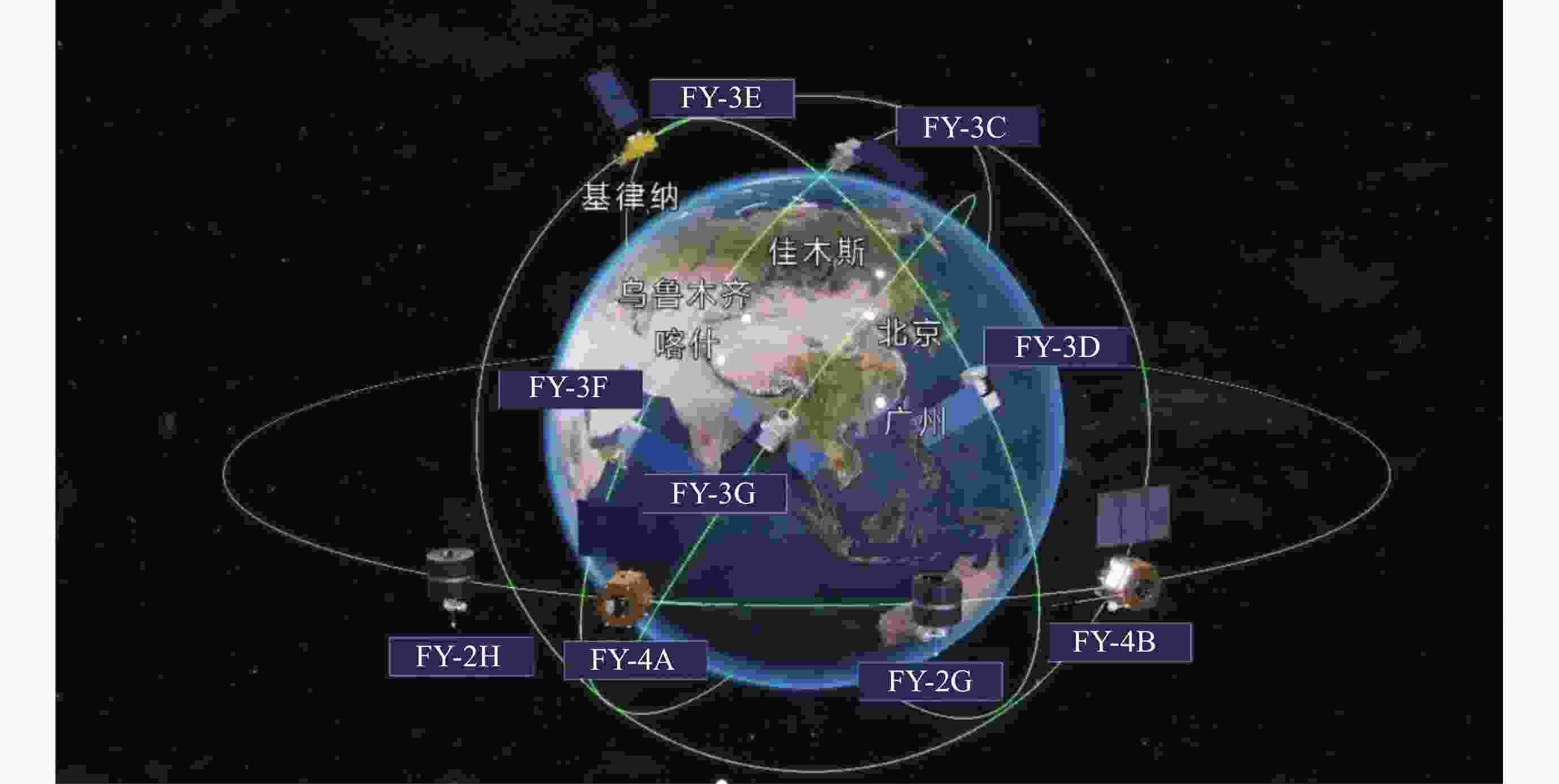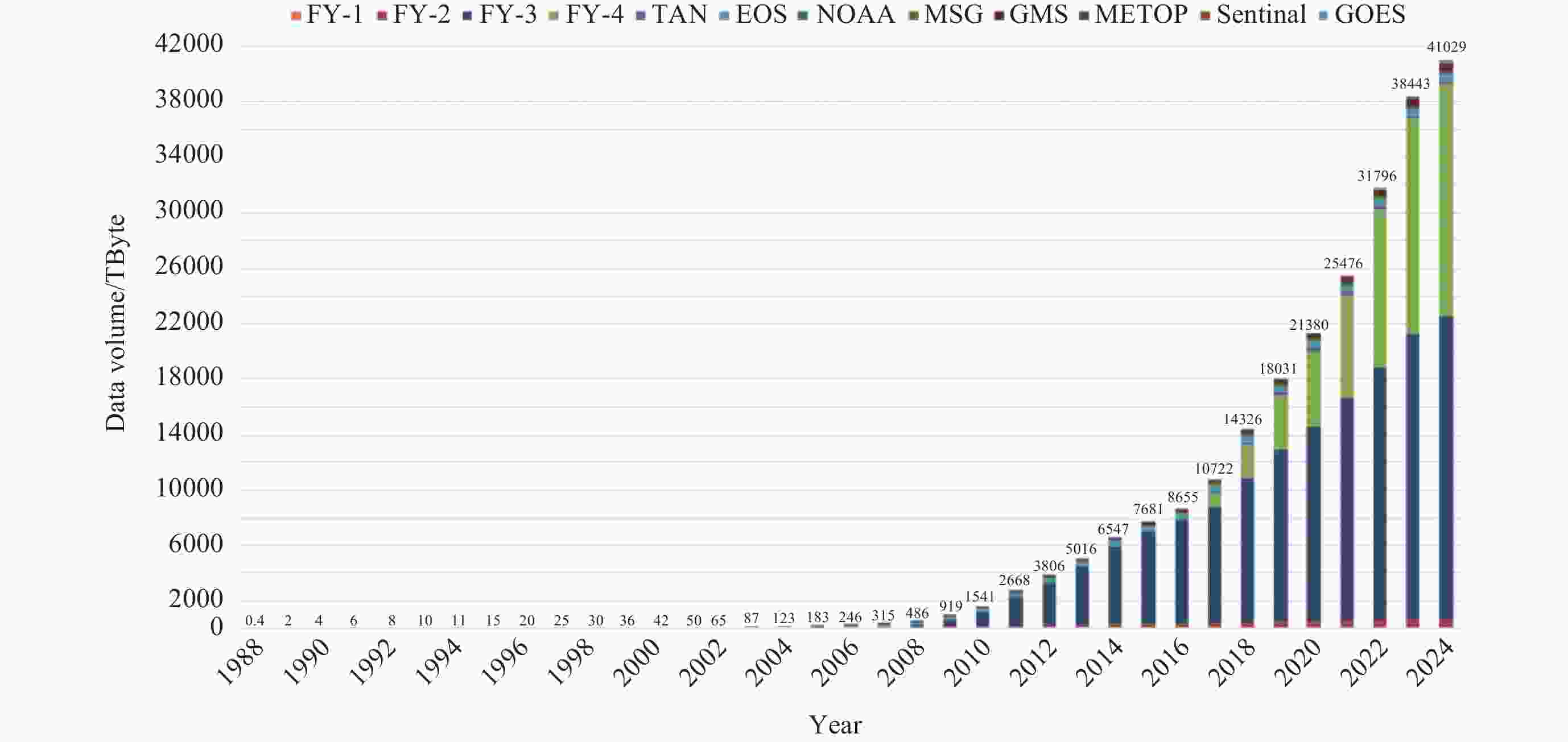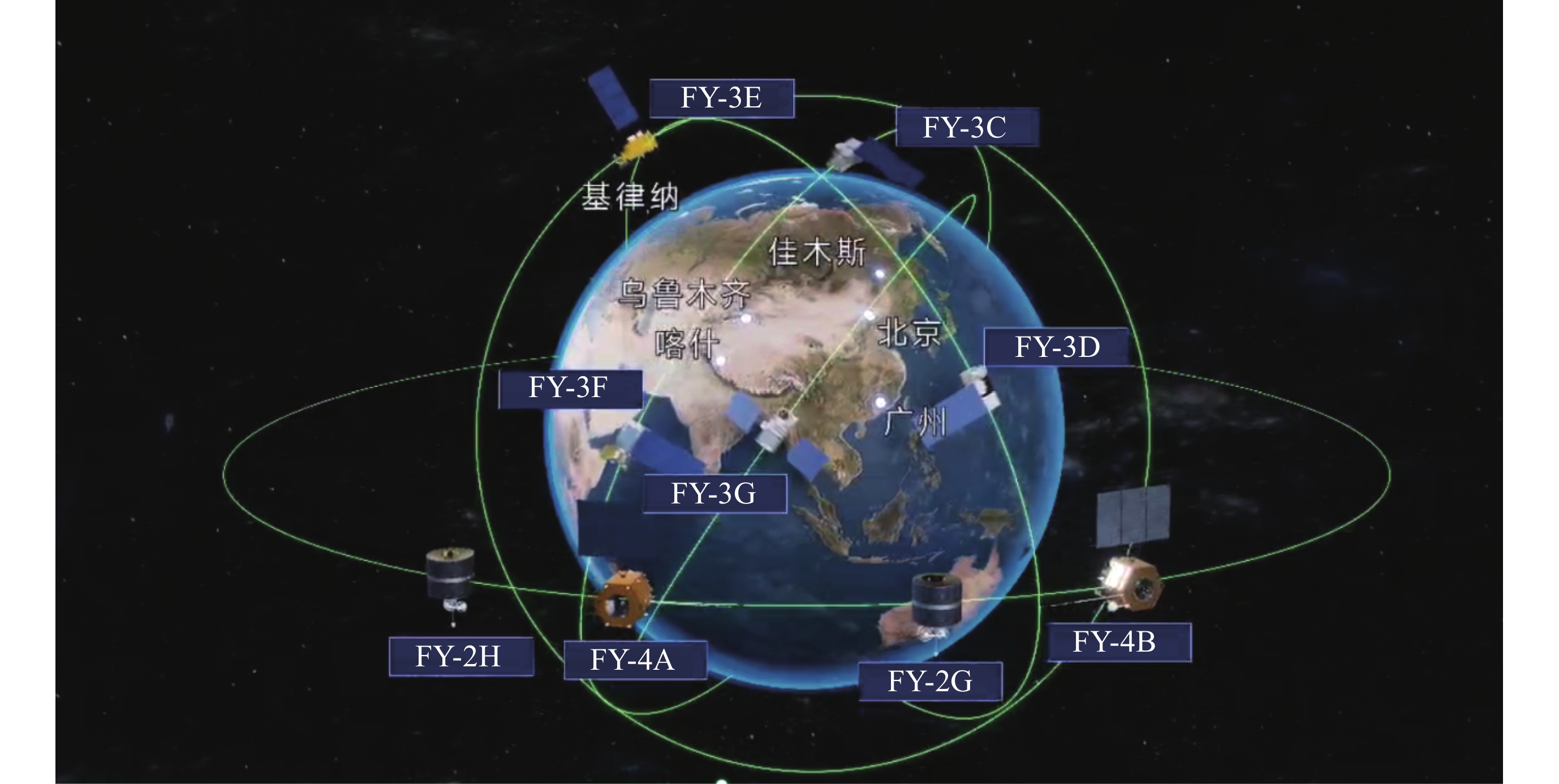Progress and Achievements of Fengyun Meteorological Satellite Program since 2022
doi: 10.11728/cjss2024.04.2024-yg21 cstr: 32142.14.cjss2024.04.2024-yg21
-
Abstract: Fengyun meteorological satellites have undergone a series of significant developments over the past 50 years. Two generations, four types, and 21 Fengyun satellites have been developed and launched, with 9 currently operational in orbit. The data obtained from Fengyun satellites is employed in a multitude of applications, including weather forecasting, meteorological disaster prevention and reduction, climate change, global environmental monitoring, and space weather. These data products and services are made available to the global community, resulting in tangible social and economic benefits. In 2023, two Fengyun meteorological satellites were successfully launched. This report presents an overview of the two recently launched Fengyun satellites and currently in orbit Fengyun satellites, including an evaluation of their remote sensing instruments since 2022. Additionally, it addresses the subject of Fengyun satellite data archiving, data services, application services, international cooperation, and supporting activities. Furthermore, the development prospects have been outlined.
-
Table 1. Instruments on FY-3G
No. Instruments Statues 1 PMR New 2 MWRI-RM Improved 3 MERSI-RM 4 GNOS-II Inherited Table 2. Instruments on FY-3F
No. Instruments Statues 1
2OMS-L
OMS-NNew 3
4
5MERSI-III
MWRI-II
ERM-IIImproved 6
7
8
9
10HIRAS-II
MWTS-III
MWHS-II
GNOS-II
SIM-IIInherited Table 3. Current Fengyun LEO satellites (as of 1 June 2024)
Orbit type
(Local time of descending node/ascending node)Satellites currently in orbit Equatorial crossing
time (designed)Equatorial crossing
time (present)Launch date Status Main
instrumentsMorning orbit
(07:00 LT–12:00 LT)/
(19:00 LT–24:00 LT)FY-3C 10:00 LT 07:39 LT 23 Sept. 2013 Partially
operationalVIRR(O)
MERSI(S)
IRAS(S)
MWRI(S)
MWTS-II(S)
MWHS-II(O)
TOU(O)
SIM(S)
ERM(O)
GNOS(O)
SEM(S)Afternoon orbit
(12:00 LT–17:00 LT)/
(00:00 LT–05:00 LT)FY-3D 14:00 LT 13:45 LT 15 Nov. 2017 Operational MERSI-II(O)
HIRAS(O)
MWTS-II(O)
MWHS-II(O)
MWRI(O)
GAS(T)
GNOS(O)
WAI(O)
IPM(O)
SEM(O)Early-morning orbit FY-3E 5:30 LT 5:30 LT 5 Jul. 2021 Operational MERSI-LL(O)
HIRAS-II(O)
MWTS-III(O)
MWHS-II(O)
GNOS-II(O)
WindRAD(O)
SSIM(O)
SIM-II(O)
X-EUVI(O)
Tri-IPM(O)
SEM(O)Drifting FY-3G 16 Apr. 2023 Operational See Table 1 Morning orbit FY-3F 10:00 LT 3 Aug. 2023 Commissioning See Table 2 Note (O) indicates that the instrument is in a state of operational readiness, whereas, (S) denotes that the instrument is currently in a state of shutdown. Table 4. Current Fengyun GEO satellites in orbit (as of 1 April 2024)
Satellites Location Launch date Status Instruments FY-2G 99.5°E 31 Dec. 2014 Operational VISSR
SEMFY-2H 79°E 5 Jun. 2018 Operational FY-4A 86.5°E 11 Dec. 2016 Degraded
operationalAGRI
GIIRS
LMI
SEPFY-4B 105°E 3 Jun. 2021 Operational AGRI
GIIRS
GHI
SEPTable 5. Detailed characteristics of AGRI on FY-4B
Central wavelength/µm Spectral interval/µm SNR or NEΔT @ specified input IFOV at s.s.p./ km 1 0.47 0.45–0.49 ≥90 @ 100% albedo 1 2 0.65 0.55–0.75 ≥150 @ 100% albedo 0.5 3 0.825 0.75–0.90 ≥200 @ 100% albedo or ≥3 @ 1% albedo 1 4 1.378 1.371–1.386 ≥120 @ 100% albedo or ≥2 @ 1% albedo 2 5 1.61 1.58–1.64 ≥200 @ 100% albedo or ≥3 @ 1% albedo 2 6 2.25 2.10–2.35 ≥200 @ 100% albedo or ≥2 @ 1% albedo 2 7 3.75 (high) 3.50–4.00 ≤ 0.7 K @ 315 K 2 8 3.75 (low) 3.50–4.00 0.2 K @ 300 K or 2.0 K @ 240 K 4 9 6.25 5.80–6.70 0.2 K @ 300 K or 0.9 K @ 240 K 4 10 6.95 6.75–7.15 0.25 K @ 300 K or 0.9 K @ 240 K 4 11 7.92 7.24–7.60 0.25 K @ 300 K or 0.9 K @ 240 K 4 12 8.55 8.30–8.80 0.2 K @ 300 K or 0.4 K @ 240 K 4 13 10.80 10.30–11.30 0.2 K @ 300 K or 0.4 K @ 240 K 4 14 12.00 11.50–12.50 0.2 K @ 300 K or 0.4 K @ 240 K 4 15 13.30 13.00–13.60 0.5 K @ 300 K or 0.9 K @ 240 K 4 Table 6. Detailed characteristics of FY-4B GIIRS
Spectral range/µm Spectral range/cm–1 Spectral resolution/cm–1 NEΔR or SNR 14.7–8.85 680–1130 0.625 0.5 mW·m–2·sr–1·cm 6.06–4.44 1650–2250 0.625 0.1 mW·m–2·sr–1·cm 0.55–0.90 N/A N/A 200 @ 100% albedo Table 7. Detailed characteristics of FY-4B GHI
Central wavelength/µm Spectral interval/µm SNR or NEΔT @ specified input IFOV at s.s.p./ km 0.675 0.45–0.9 > 300 @ 100% albedo 0.25 0.470 0.445–0.495 > 300 @ 100% albedo 0.5 0.545 0.52–0.57 > 300 @ 100% albedo 0.5 0.645 0.62–0.67 > 300 @ 100% albedo 0.5 1.378 1.371–1.386 > 300 @ 100% albedo 0.5 1.61 1.58–1.64 > 300 @ 100% albedo 0.5 11.4 10.3–12.5 0.2 K @ 300 K 2.0 -
[1] ZHANG P, CHEN L, XIAN D, et al. Update on Fengyun meteorological satellite program and development[J]. Chinese Journal of Space Science, 2020, 40(5): 884-897 doi: 10.11728/cjss2020.05.884 [2] ZHANG Peng, YANG Jun, GUAN Min, et al. WMO space program and internationalization of Fengyun meteorological satellites[J]. Advances in Meteorological Science and Technology, 2022, 12(5): 56-63,79 doi: 10.3969/j.issn.2095-1973.2022.05.008 [3] 2023 6 17 21 10.3969/j.issn.1009-2366.2023.06.005 [4] National Satellite Meteorological Center. Fengyun3-03 User Requirement Specification[R]. Beijing: National Satellite Meteorological Center, 2015 [5] YANG J, ZHANG Z Q, WEI C Y, et al. Introducing the new generation of Chinese geostationary weather satellites, Fengyun-4[J]. Bulletin of the American Meteorological Society, 2017, 98(8): 1637-1658 doi: 10.1175/BAMS-D-16-0065.1 [6] National Satellite Meteorological Center. Fengyun4-02 Requirement Specification[R]. Beijing: National Satellite Meteorological Center, 2019 [7] 王美丽, 赵现纲. “风云地球”平台实现全国推广 气象卫星遥感应用服务质量提升[EB/OL]. (2023-02-03). https://www.cma.gov.cn/ztbd/2023zt/20230214/2023021403/202302/t20230203_5287712.html [8] 于桐, 张娟, 朱琳玲. 两年探索 一路领航 国际民航组织全球空间天气中心(中国)成长记[EB/OL]. (2023-11-13). https://www.cma.gov.cn/ztbd/2023zt/20230524/2023052401/202311/t20231114_5885966.htm [9] WANG Jinsong, LU Naimeng, ZHAO Xiangang, et al. Review and prospect on the meteorological small satellites[J]. Advanced Small Satellite Technology, 2024, 1(1): 23-29 -
-






 下载:
下载:




